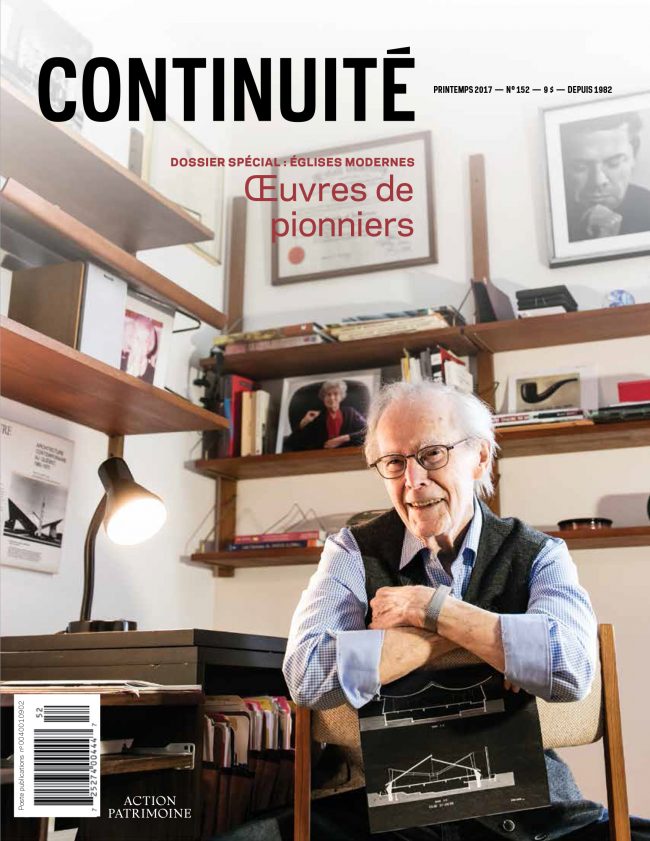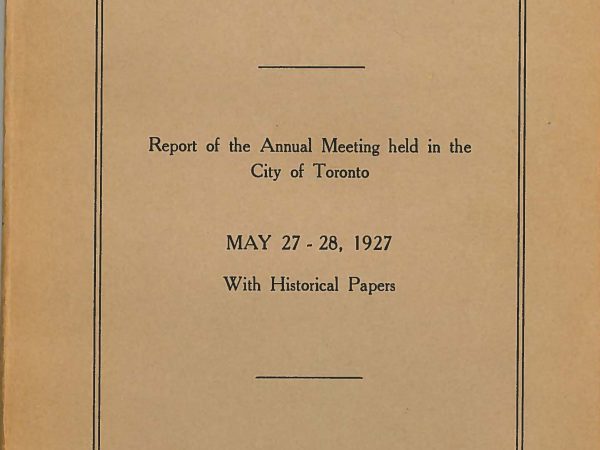The magazine Continuité has existed for several decades. Can you tell us how it began and what motivated its creation?
The Conseil des monuments et sites du Québec (CMSQ) created Continuité in 1982. Seeking to reach a larger public, the Organization replaced its Bulletin by a real magazine, the only Francophone Canadian periodical to deal with heritage. Three years later, in 1986, the CMSQ created the Éditions Continuité in order to allow the magazine to become autonomous. This non-profit organization publishes Continuité with the aim of promoting the protection, conservation and development of our heritage.
Continuité covers all types of heritage (built, landscape, intangible, etc.) across Quebec. Its reports and articles are anchored in the present and rely on the expertise of the most well-known specialists in the field (architects, historians, archaeologists, ethnologists, archivists, museologists, planners, geographers, etc.). We deliver quality information in a user-friendly and dynamic style all the while presenting articles in an attractive and elegant manner in order to reach the widest possible readership.
By doing so, the magazine plays several key roles in the heritage field. First, it popularizes a very rich content in order to make it accessible to the general public and policy makers. In addition, by highlighting Quebec heritage and addressing current issues related to its conservation, it raises public awareness of the value of our cultural heritage and, by this fact, encourages the public to get involved in its protection and preservation. Secondly, Continuité provides a forum for specialists and stakeholders so that they can share their knowledge and disseminate their initiatives. It therefore serves as a reference tool for students and professionals in the field. Finally, as it draws together articles on all types of heritage and covers the whole of the province, the magazine allows us to build bridges between the various disciplines and regions.
Since 1982, the magazine has no doubt undergone a number transformations in order to survive.
Over 35 years, the magazine has obviously evolved considerably. The most important change in recent years occurred last fall, in 2016, with the launch of its new look.
For its 150th issue, Continuité was entirely refashioned. It now boasts a refined and elegant, modern look that better reflects the dynamism of the heritage milieu and the current nature of the issues that the magazine broaches. It thus offers its readers, employees and partners a contemporary tool for the dissemination of news and ideas. Heritage is not simply a view of the past, it lives in the present and must be preserved for the future.
In addition, with a view towards offering better coverage of contemporary issues and in order to diversify the points of view expressed in our pages, we now publish more journalistic articles.
Tell us about Continuité’s readership.
Our readership is composed of experts from the various disciplines covered by the magazine as well as members of the public interested in heritage. That is why we seek to publish articles that are both clear and lively. Despite our accessible presentation, many of our readers are highly educated with 83% having studied at university.
We also know that our readers are spread out throughout Quebec: 51% of them live outside of Quebec and Montreal.
How do you reach out to your readers, how are you distributed?
Most of our readers are subscribers. They can subscribe to the magazine in a variety of ways, including through our web site and by going through the Société de développement des périodiques culturels (SODEP).
With regards to over-the-counter sales, the magazine is distributed at newsstands by Messageries Dynamiques and is available at points of sale such as the gift-shop of the Musée national des beaux-arts du Quebec. Individuals can also order single issues through both our and SODEP’s web sites.
With regards to subscriptions to the electronic version, Érudit allows us to reach a large number of institutions. We also sell single electronic copies on different platforms such as our web site, SODEP’s website and the digital warehouse maintained by the Association nationale des éditeurs de livres.
Continuité is therefore distributed in an electronic format on several platforms and in several forms.
Érudit handles the sale of our institutional digital subscriptions, but we also wanted to give our readers the opportunity to purchase individual digital subscriptions. That is why we offer this product on our web site. It complements what Érudit offers.
That said, although some readers choose to buy an issue in the electronic format in order to have quick access, most still prefer to receive the magazine in paper format, especially when they are subscribers.
What is great with Érudit is that we are participating in the constitution of a marvelous virtual collection, which will eventually be accessible to all [Editors’ Note: cultural journals are available for free access three years after their publication]. In this sense, we are building a heritage of great value together.
Have some articles or issues been particularly important in the history of the magazine?
In 35 years of history, Continuité has published many outstanding articles and special issues. Two special issues seem to me, however, to be particularly apt for further reading for this issue of Salons devoted to heritage. Issues 83 and 94 offer an illuminating portrait of the domain and the issues that affect it.
To mark the year 2000, we produced a special issue on heritage over the course of the century. In particular, there is an exceptional time-line.[1]1Continuité
Pour une lecture du temps
1999 And for the 20th anniversary of the magazine, in 2002, we published an issue that highlighted the great heritage debates of the previous 20 years.[2]2Continuité
Deux décennies d’effervescence
2002
Translation: Peter Keating


